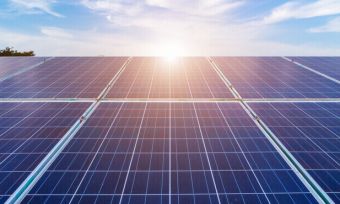Best Solar Feed In Tariff SA
Looking for a better solar plan or provider in South Australia? We compare plans and providers that operate in and around the Adelaide area to help you find the best fit for your needs.

Start with your postcode
to compare 1,500+ Canstar Blue expert rated plans
Showing 10 of 62 results
Unsure of a term in the above table? View glossary
The initial results in the table above are sorted by Solar feed-in tariff (High-Low) , then Price/year (estimated) including conditional discount (Low-High) , then Brand Satisfaction (High-Low) . Additional filters may have been applied, which impact the results displayed in the table - filters can be applied or removed at any time.
Latest in solar energy
South Australians pay some of the highest electricity rates in the country, which may explain why about one in three households have solar. Not only can a solar system help reduce energy costs, it can also add more value to a home. Installing solar panels isn’t a cheap undertaking by any means, which is why SA bill-payers will need to know what feed-in tariffs (FiTs) are available, including the plans these rates come attached to.
On this page:
- Which provider has the best solar feed-in tariff in SA?
- The best solar feed-in tariffs in SA
- Which is the best solar energy provider?
- How do I know what my solar feed-in tariff is?
- Is there a minimum solar feed-in tariff in SA?
- Are there solar-specific plans available in SA?
- Energy rates or solar feed-in tariff: What’s more important?
- Is solar worth it in SA?
Which provider has the best solar feed-in tariff in South Australia?
Origin currently has the highest solar feed-in tariffs in South Australia, offering eligible customers 20 cents per kilowatt hour (c/kWh) for energy exported to the grid. Trailing behind is EnergyAustralia with 12c/kWh, and AGL offering 10c/kWh.
Maximum and minimum solar feed-in tariffs in SA
In the table below, you’ll find a list of minimum and maximum solar feed-in tariffs available from retailers in South Australia. Some of these companies may not operate in all areas of SA, while some FiTs may only be available when certain conditions are satisfied. Please check each provider’s website for further details.
Here are the plans with the highest solar feed-in tariffs from the retailers on our database. These costs are based on SA Power network in Adelaide but prices will vary depending on your circumstances. We show one product per retailer, based on its plan with the highest solar feed-in tariff. These products have been listed in order of highest feed-in tariff. Annual price estimates assume general energy usage of 4000kWh/year for a residential customer on a single rate tariff. Price estimates exclude solar feed-in tariff credits. These are products from referral partners†. Our database may not cover all deals in your area, and please check retailer websites for up to date information.
Here are the plans with the lowest solar feed-in tariffs from the retailers on our database. These costs are based on SA Power network in Adelaide but prices will vary depending on your circumstances. We show one product per retailer, based on its plan with the lowest solar feed-in tariff. These products have been listed in order of highest feed-in tariff. Annual price estimates assume general energy usage of 4000kWh/year for a residential customer on a single rate tariff. Price estimates exclude solar feed-in tariff credits. These are products from referral partners†. Our database may not cover all deals in your area, and please check retailer websites for up to date information.
Which is the best solar energy provider?
Red Energy is the winner of Australia’s best solar energy provider for 2023, scoring five stars for customer service, focus on environmental sustainability and overall satisfaction. While Red Energy’s solar feed-in tariffs may not be the most competitive in the state, the retailer does offer additional benefits to customers through its partnership with Qantas, wherein customers can earn frequent flyer points off their energy bill.
How do I know what my solar feed-in tariff is?
Your solar feed-in tariff should be listed on your latest energy bill, usually on the second page where there’s a breakdown of fees and charges. If you can’t locate your FiT rate, jump onto your retailer’s website and check out its’ energy fact sheets. These are documents that all power companies must have publicly available to customers, and include every detail of each plan they offer, like rates, fees and charges.
Is there a minimum solar feed-in tariff in SA?
There is no longer a minimum solar feed-in tariff in South Australia, meaning that energy providers set their own FiT rates. Customers with eligible solar PV systems connected before September 30, 2011 may receive a premium feed-in tariff, which is set by the state’s energy distributor.
Are there solar-specific plans available in SA?
In SA, there are solar-specific products, some of which offer higher feed-in tariffs. While these plans can sound great on paper, it’s worth checking out the full details directly with each retailer, as these plans may not always be publicly listed. Sometimes solar-specific deals require certain conditions to be met or eligibility may depend on signing up during a promotional period.
Energy rates or solar feed-in tariff: What’s more important?
Customers with solar panels are naturally going to look for the highest feed-in tariff they can find, but it’s a good idea to check out other features of a plan before signing up. Why? Well, in some situations, plans with high FiTs could be disguising increased electricity usage charges, as well as supply charges. These are the base rates every customer in SA pays, regardless of how much energy is used.
Homes that export plenty of excess power back into the grid may benefit from a higher feed-in tariff, as they’ll likely be credited more on their bills. However, it could be a different story for households who can’t feed back as much electricity due to having a smaller solar system, in which they may be better off with cheaper base rates as opposed to a larger FiT. It will ultimately come down to what suits each customer, such as their energy needs and personal circumstances.
How to get the most out of your solar in SA
For many, solar is not just about saving on power bills. It’s also about adding value to your property and reducing your home’s carbon footprint. We all know that installing solar is a monumental leap towards smaller energy bills, which is why having a suitable feed-in tariff can make a big impact on long-term costs. But the fun doesn’t stop there, make sure you check out each feature of a plan as there may be further value you’re unaware of. Start your journey by clicking the link below.
About our electricity experts
 Tara Donnelly: Utilities Editor
Tara Donnelly: Utilities Editor
As Canstar Blue’s Utilities Editor, Tara Donnelly covers the internet, mobile and energy sectors – topics she’s spent a decade focused on, alongside consumer technology, within the comparison industry. Her telco expertise has seen her appear in national media including 9 News, 7 News, Sunrise, the ABC and The Sydney Morning Herald. You can follow Tara on LinkedIn
Meet the Editorial Team

Breanna Gream: Data Insights Team Lead
Breanna Gream is Canstar’s Data Insights Team Lead, and is responsible for developing the methodology and delivering Canstar Blue’s Value Ranking for the energy and telco sectors. She holds a dual degree in Business and Mathematics from the Queensland University of Technology, and enjoys using her skills to help consumers find more suitable utilities plans. Connect with Breanna on LinkedIn.
Meet the Research Team
Important information
For those that love the detail
This advice is general and has not taken into account your objectives, financial situation or needs. Consider whether this advice is right for you.
























